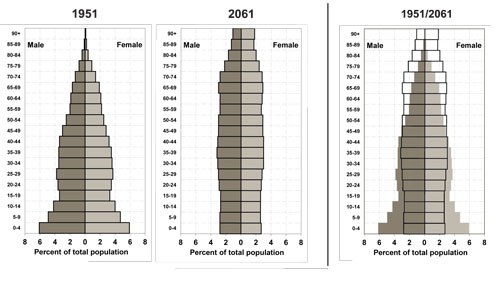About this performance audit
The first of New Zealand’s baby boomers reached pensionable age (65 years) in 2011. The quality of life that people enjoy as they age depends on the risks and opportunities they experience throughout their lives.
Individuals and countries need to prepare for older age as the population ages, and not start to focus on older people only when they become eligible for the pension.
Many governments think that an ageing population is a burden. The popular media often express the view that older people contribute little to society but take a lot. However, evidence is increasingly showing that older people are essential to the economic health of the country. People aged 65+ can continue to contribute economically in the workforce, through their leisure spending, and through volunteering and community work.

How do you measure how prepared a country is for an ageing population?
The Madrid International Plan of Action (2002) set out to address the opportunities and challenges of ageing in the 21st century. It includes a set of 50 measures that you can use to assess how well prepared a country is - we call them the Madrid indicators.
To find out more, see our list of all the indicators, New Zealand's 2007 report on the Madrid Plan, and Appendix 2 of this document: www.unfpa.org/public/home/publications/pid/11584.
What can the Madrid indicators tell us about New Zealand?
Our project will find out whether you can get information on each of the Madrid indicators for New Zealand.
We have adjusted most of the indicators to report on results by ethnicity, age, and gender.
We have other questions, such as:
- Are the indicators useful to us, and why?
- What does the data tell us about the status of older people?
- How is data used to make improvements or projections?
Different types of indicators
There are three types of Madrid indicators: demographic indicators; instrumental indicators; and outcome indicators.
 |
Demographic indicators show what a country knows about its older population. |
 |
Instrumental indicators check whether the “building blocks” are in place for a good outcome. |
 |
Outcome indicators assess actual results. |
Outcome indicators provide more certainty than instrumental indicators.
We will publish a report later in 2013. We hope that the report will provide assurance about our country’s preparations during the last 20-30 years to deal with an ageing population. However, it's possible that our report could raise more questions than it answers. If so, we hope to stimulate discussion and change among public entities, the private sector, non-government organisations, and individuals.
In the meantime, we're sharing our interim results for each indicator and writing a blog about our experiences in trying to collate the data. Because we've not finished the project, it's possible that the interim results for each indicator could change. If they do, we will update them here.

